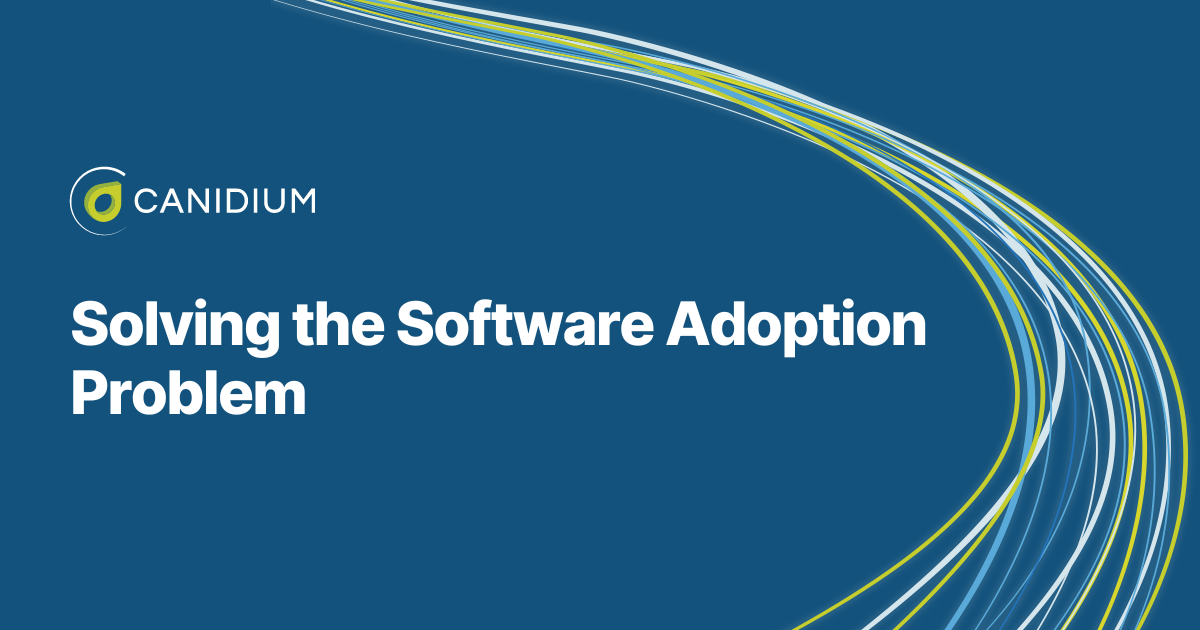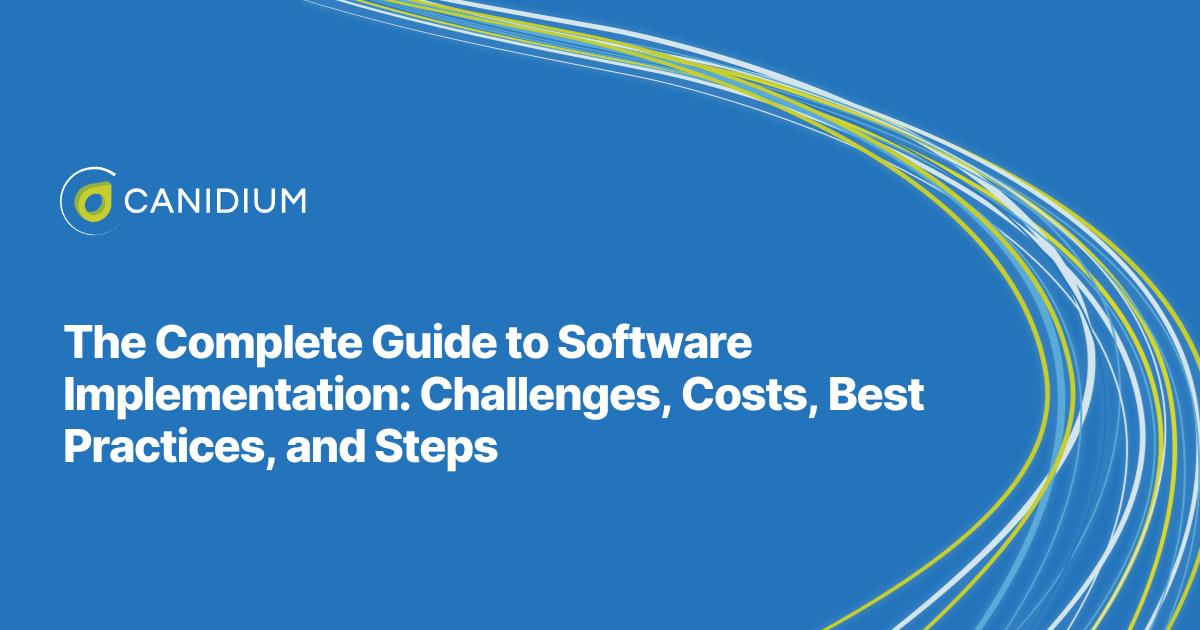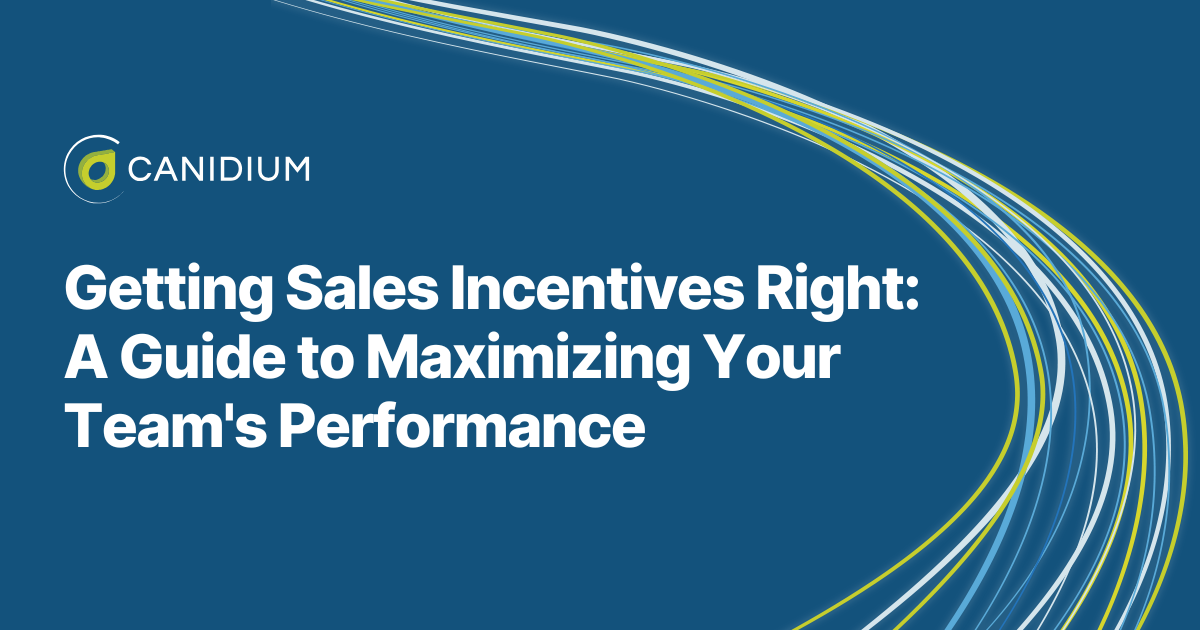Your software solution will only generate returns if your workforce uses it. Even the most sophisticated and well-configured solutions can only offer value if you effectively oversee the user adoption process.
Change management for solution users is often overlooked in new software implementations. Your teams are expected to use the streamlined solution once it is live. However, resistance to change is a powerful force, often requiring you to guide your workforce into using new technologies on a more granular level.
At Canidium, effective training and user adoption efforts are an integral part of every project. We have seen and solved challenges of low software adoption, helping our clients maximize their ROI.
Based on our understanding of user adoption challenges, this article covers the most essential tool in your arsenal to increase software solution usage. To give you a complete guide to increasing adoption rates, we walk you through the following topics:
- How Low Solution Adoption Impacts Your Bottom Line
- Canidium’s Solution to Low User Adoption
- Overcoming User Adoption Challenges Leveraging the Benefits of the RADiance Plug-in
- Eliminating Adoption Issues and Increasing Your ROI with RADiance
How Low Solution Adoption Impacts Your Bottom Line
Recent research suggests that 70% of organizations fall short of their digital transformation objectives. Many factors play into this statistic, but solution adoption is a critical component of garnering positive solution returns. You need to get your workforce to fully embrace a new software tool to achieve its potential maximum ROI.
The problems associated with low solution adoption are well known. They can significantly impact your organization's bottom line in several ways. When employees do not fully engage with a newly implemented tool, the anticipated benefits and efficiencies often fail to materialize, leading to wasted resources and missed opportunities.
Here are seven key ways in which low solution adoption can hurt your business:
- Wasted Investment: One of the most immediate and visible impacts of low adoption rates is the waste of financial resources. Organizations often invest substantial amounts in purchasing and implementing software solutions, including licenses, training, and integration costs. When these tools are not used to their full potential, the ROI diminishes, making the initial expenditure seem unjustified.
- Decreased Productivity: Software solutions are typically implemented to streamline processes, improve productivity, and enhance efficiency. When employees do not adopt these tools, the expected improvements in productivity do not occur. Instead, employees might revert to older, less efficient methods, increasing time and effort to complete tasks, thereby reducing overall organizational productivity.
- Inaccurate Data and Reporting: Adoption issues can lead to complete or correct data entry. Suppose a software solution is designed to centralize data management and reporting but is not widely used. In that case, the resulting data will be fragmented and unreliable. This issue can hinder decision-making, as leaders rely on accurate and comprehensive data to make strategic decisions.
- Increased Operational Costs: Low adoption rates can lead to higher operational costs. Without proper use of the software, tasks that should be automated or simplified might require manual intervention, increasing labor costs. Additionally, the costs associated with ongoing support, retraining, and troubleshooting can escalate if the users do not widely accept the solution.
- Lower Employee Morale and Engagement: When employees are not adequately trained or do not see the value in using new software, it can lead to frustration and disengagement. Low morale and engagement can further reduce productivity and increase turnover rates, adding recruitment and training costs for new employees to the financial burden.
- Missed Competitive Advantage: Software solutions are often implemented to gain a competitive edge by improving efficiency, enhancing customer service, or enabling better strategic decision-making. Low adoption rates mean your organization might miss out on these competitive advantages, leaving you vulnerable to competitors who fully leverage similar tools.
- Inability to Meet Compliance and Audit Requirements: Many software solutions help organizations comply with industry regulations and standards. Poor adoption can result in non-compliance, leading to potential legal issues, fines, and damage to your organization's reputation.
The culmination of these problems significantly degrades the value of your new software system. You must track your solution adoption rates so that you can intervene when potential training opportunities or workflow impediments limit software usage among your workforce.
Canidium’s Solution to Low User Adoption
The strategy you implement to solve your software adoption issue will be unique. You must address the exact reason why your workforce is not fully engaging with your new solution—there is no one-size-fits-all way to approach low adoption rates. However, every company needs one thing to begin formulating its strategic approach to increasing software adoption: insight into how the software is currently being used.
Based on this overwhelming need for an adoption analytics dashboard, our team at Canidium developed a unique tool distinct from standard SAP offerings. The RADiance Plug-in is a powerful dashboard tool that tracks user logins and monitors adoption rates within your incentive management system. It is integrated into embedded analytics to provide a detailed reporting mechanism that helps you understand how your employees interact with the software. The result is RADiance, a handy add-on for SuccessFactors Incentive management (SFIM) that can be implemented at a fixed price.
The tool offers a variety of widgets, each serving a specific purpose in tracking user engagement. RADiance monitors and reports login activities, giving you greater visibility and insight into new solution adoption.
The plug-in can show you a six-month login history, indicating which employees use the solution frequently. The interactive features also enable you to compare login activities between different users or groups. This capability is instrumental if you have various types of users, such as salespeople, managers, and administrators, and you want to analyze their login patterns.
At the same time, RADiance provides insights into individual users' last login times. This information allows you to identify employees who may not engage with the software as expected, allowing you to address potential issues through targeted training or support.
Overcoming User Adoption Challenges Leveraging the Benefits of the RADiance Plug-in
The RADiance Plug-in offers many benefits that can help you overcome implementation pain points by significantly enhancing the adoption and effectiveness of your incentive management software. When you first implement new software, there is often an initial surge in usage followed by a drop-off as the novelty wears off. The RADiance Plug-in helps you monitor this ramp-up period effectively by tracking user logins and engagement. These benefits enable you to identify trends and take proactive steps to maintain high levels of adoption.
Here are the four critical benefits of the RADiance plug-in:
.png?width=1920&height=1080&name=4%20Benefits%20of%20RADiance%20(1).png)
1. Deeper Behavioral Insights
Radiance allows you to gather valuable information on user behavior. This information can be used to create targeted incentives and support mechanisms, improving overall software engagement.
While RADiance is primarily a tool for tracking logins, its data can be used to gain broader business insights. For example, you might find correlations between frequent logins and higher performance or sales figures. Although these insights require careful analysis and may vary from one organization to another, RADiance provides the foundational data needed to explore these possibilities.
2. Increased Implementation ROI
One critical metric for any software implementation is your ROI. Justifying this investment is crucial, as it reassures stakeholders that the resources spent on new software are yielding tangible benefits. RADiance helps you achieve this by providing concrete data on user adoption rates. By tracking these rates, you can generate precise metrics that illustrate how effectively your organization utilizes the new software solution.
For instance, RADiance enables you to track and report specific metrics, such as adoption rates, within a particular timeframe. This metric type is potent when communicating the software's value and effectiveness to stakeholders. It provides a precise, quantifiable measure of success that stakeholders can understand and appreciate. High adoption rates indicate that employees are engaging with the software as intended, which suggests it is meeting its goals and justifying its cost.
At the same time, tracking adoption rates with RADiance can help identify the financial benefits of increased software usage. For example, higher adoption rates can lead to improved productivity, streamlined processes, and better data accuracy, all contributing to the organization's bottom line. These improvements can translate into cost savings, higher revenues, and more efficient operations, further strengthening the case for the software investment.
3. Better Change Management
RADiance can also be a vital tool in addressing several common adoption challenges. It helps identify groups needing more training and provides targeted support, addresses resistance to new tools by offering insights into which users or departments are resistant and why, and ensures that the software's benefits are communicated effectively to end users, increasing adoption rates.
RADiance provides detailed insights into which groups or individuals are not using the software as expected, allowing you to pinpoint areas where they may need additional resources. Whether it involves creating new training materials or holding focused sessions with specific groups, RADiance helps you address these gaps effectively.
4. Improving and Maintaining User Experience
The data provided by RADiance is helpful at the point of implementation and for ongoing monitoring and improvement. Regularly reviewing usage metrics helps ensure that adoption remains high and that any emerging issues are quickly addressed.
By leveraging the RADiance Plug-in, you can maximize the effectiveness of your incentive management software, ensuring that your employees are fully engaged and that your investment delivers the expected returns.
Eliminating Adoption Issues and Increasing Your ROI with RADiance
Low solution adoption can significantly impact your organization's bottom line. Addressing these challenges requires tracking adoption rates and intervening with training or support when necessary.
The RADiance Plug-in offers numerous benefits to help overcome these adoption challenges. It facilitates initial adoption and engagement, identifies training needs, enhances user engagement, and provides deeper behavioral insights. By justifying your investment with concrete data on user adoption rates, RADiance helps you demonstrate the value and effectiveness of the software implementation to stakeholders, ensuring that your investment delivers the expected returns.
The plug-in also supports better change management by providing detailed insights into which groups or individuals are not using the software as expected, allowing you to address these gaps effectively.
Now that you understand how integrating the RADiance plug-in during your solution implementation can improve your adoption rates, your next step is to build buy-in for your project. Read about how to generate internal interest in your implementation project.








